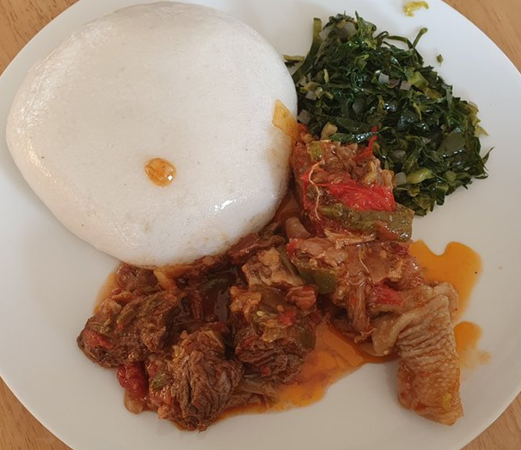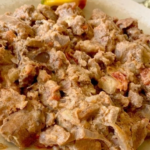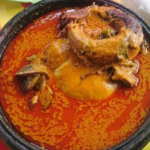Zimbabwean cuisine is a reflection of the country’s rich cultural heritage and diverse culinary traditions. Among the array of delectable dishes, one that stands out is Sadza and Huku, a traditional chicken and cornmeal dish that tantalizes the taste buds with its robust flavors. This hearty and satisfying meal is a staple in Zimbabwean households and embodies the essence of comfort food. Let’s delve into the origins and preparation of Sadza and Huku, as well as the unique flavors that make it a beloved dish in Zimbabwe.
Sadza, also known as nsima or pap, is a staple food in Zimbabwe. It is made from finely ground white cornmeal, which is cooked with water until it reaches a thick, porridge-like consistency. Sadza serves as the foundation of the dish, providing a neutral base that complements the flavors of the accompanying chicken.
Huku, meaning “chicken” in the Shona language, is a key component of this dish. Zimbabwean cuisine often includes poultry, and chicken is a popular choice for its versatility and widespread availability. The chicken is typically prepared with a medley of spices and cooked until tender, resulting in succulent and flavorful meat.
The flavors of Sadza and Huku come together harmoniously. The cornmeal porridge acts as a canvas for the aromatic chicken stew, allowing the flavors to meld and enhance each other. The Sadza absorbs the flavors of the chicken, creating a delightful combination of tastes with every bite.
The chicken stew is prepared by sautéing onions, garlic, and various spices such as paprika, curry powder, and ground coriander. Tomatoes are then added, along with other vegetables like bell peppers and carrots, which contribute to the stew’s vibrant colors and additional layers of flavor. The chicken pieces are simmered in this flavorful mixture until they become tender and juicy, absorbing the essence of the spices and vegetables.
The beauty of Sadza and Huku lies in its versatility. While the core elements of the dish remain constant, it can be customized to suit individual preferences and regional variations. Some cooks may add additional ingredients such as okra, green beans, or even peanut butter to create a unique twist on the traditional recipe. This adaptability allows for a diverse range of flavors and textures, making each rendition of Sadza and Huku a culinary adventure.
Beyond its delicious taste, Sadza and Huku holds cultural significance in Zimbabwean society. It is a dish often shared among family and friends, symbolizing togetherness and unity. In many households, the preparation and sharing of this dish are regarded as a bonding experience, fostering a sense of community and tradition.
In recent years, the flavors of Zimbabwean cuisine, including Sadza and Huku, have gained recognition beyond the country’s borders. Zimbabwean restaurants and food enthusiasts have introduced these dishes to international audiences, spreading awareness and appreciation for the country’s culinary heritage.
In conclusion, Sadza and Huku is a Zimbabwean dish that exemplifies the diverse and flavorful nature of the country’s cuisine. The combination of the creamy cornmeal porridge and the aromatic chicken stew creates a symphony of flavors that is both comforting and satisfying. Whether enjoyed in a Zimbabwean home or a restaurant abroad, Sadza and Huku brings people together, offering a taste of Zimbabwe’s rich culinary traditions and cultural warmth.








